1. Principles and practices (Jan 23)¶
This week I worked on defining my final project proposal as per the instructions for the assessment of Assignment 1. Please keep thinking about these points for refining the project. I thought of several ideas for the project such as making a low cost weather station, low cost smart home automation system, low cost 3d printer but settled down on making a kit for converting an existing bicycle to an electric bike.
Motivation for the project¶
Electric Vehicles are the future for the world as they can reduce carbon emissions. But there is an urgent need for Electric Vehicles in India. The primary reasons being vehicle emissions responsible for poor air quality in most of the Indian cities and India’s heavy dependence on the import of oil. The present government is preparing a roadmap to sell only electric vehicles in India by 2030 (1). India is also aggressively increasing its solar power capacity (2) and has become the third largest solar market in the world (3). In this context, it is important to motivate students to get excited about the design and fabrication of electric vehicles.
My project idea¶
Through my project, I would like to create the documentation for the design and fabrication of a low cost, easy to make electric vehicle. One of the simplest ways to get started would be to convert an existing bicycle to a solar powered electric bike. Firstly, the bicycle would be converted to an electric bike. Then depending on the time left, it would be made solar powered. For a hot climate such as New Delhi, India, a sun-shade might also be added to make the user experience thermally comfortable. The motor may also be made to act as a generator to charge the battery with pedal power. The bike might also have a smartphone mount with the sensor data for speed, ambient temperature, etc. displayed in a mobile app via Bluetooth. This project has tremendous possibilities to extend it to the design and fabrication of an electric two, three or four wheeler. The vehicle could also be made autonomous or self-driving. For Delhi, air quality sensor could also be added to prompt the user to wear a mask while driving if the air quality is poor. Below are the images with the references which may help me in providing direction towards this project.
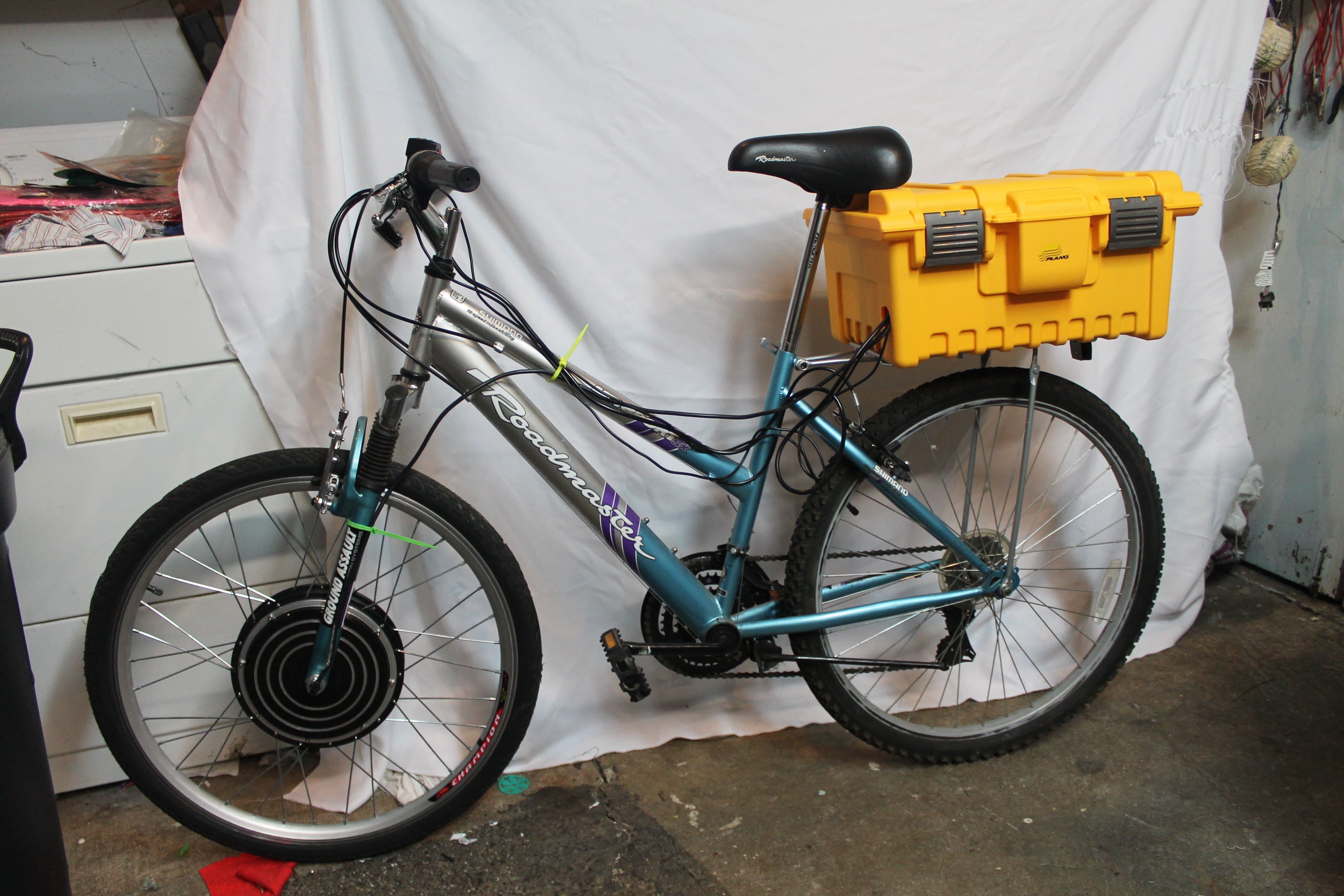
Figure: Bicycle converted to an electric bike (4)
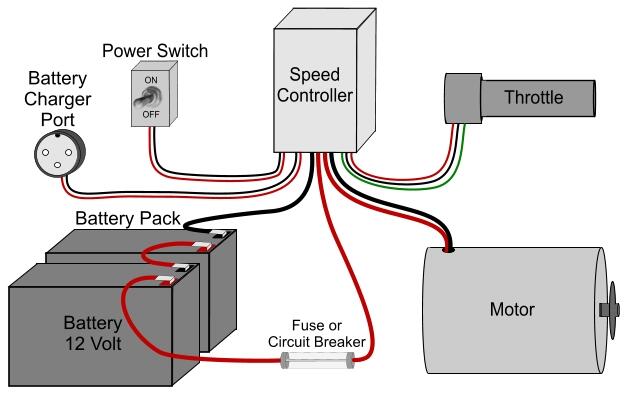
Figure: Schematic diagram of an electric bike (5)
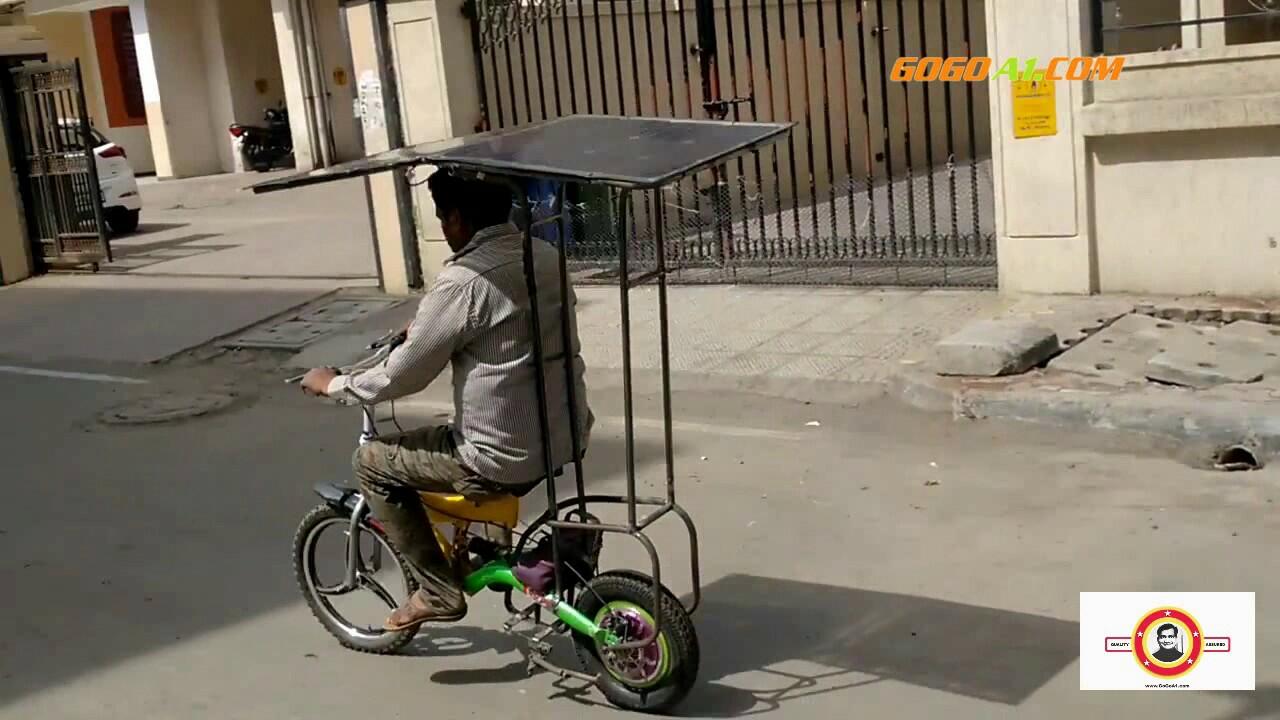
Figure: Solar powered (optional) e-bike (6)
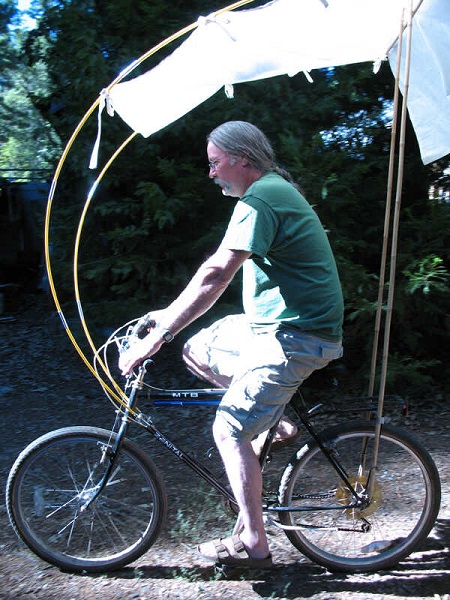
Figure: Bike shade (optional) (7)
These images were combined to create this sketch.
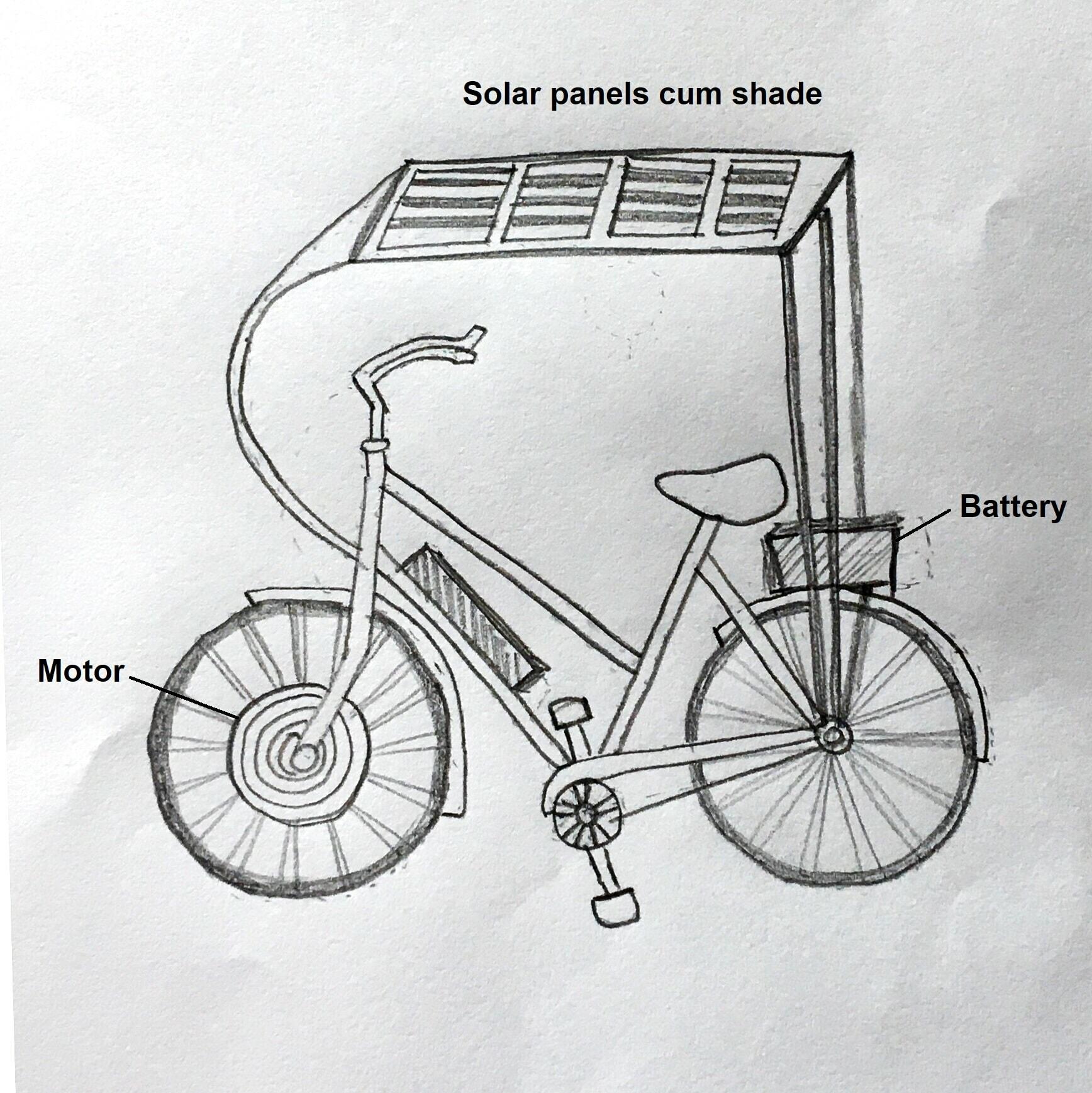
Approach¶
I would follow spiral development. I plan to buy a cheap e-bike conversion kit and a solar system to have my e-bike running by February end. I would then work on building components modularly.
My main focus would be to design and fabricate the motor controller PCB (this was also suggested by Suhas, our regional review instructor from Vigyan Ashram) and connect it to a digital display, preferably a smart phone. I would also like to use the sensors in the smart phone such as GPS. If time permits, I would also like to build my own Lithium ion battery pack with Battery Management System. I would also like to build my solar system from solar cells.
Suspected challenges¶
I haven’t designed or fabricated a motor controller before so I am hoping to use the DIY websites and help from instructors to be able to successfully build it.
Components to be bought¶
Bicycle, Battery pack, Electric Motor and Motor controller, Solar system
Skills to be used in the project¶
- CAD and fabrication: Laser cutting mounts for the battery pack, sun-shade cum solar panel, Laser cutting the casing for the motor controller, 3d printing the casing for the digital display.
- Electronic design and fabrication of motor controller, using AVR microcontroller for getting the sensor data and actuation. Sensor data would be for speed, air quality, GPS.
References¶
(2) https://en.wikipedia.org/wiki/Jawaharlal_Nehru_National_Solar_Mission
(4) https://www.instructables.com/id/DIY-Electric-Bike/
(6) https://www.youtube.com/watch?v=28Xcega6MfM
(7) http://www.pbase.com/image/83357330
Notes¶
These notes were taken during the lecture for this week (16 Jan). The lecture started with presentations by some old students. One of the students was as young as 10 years old from Kerala. Neil suggested the use of Schmidt trigger to one of the other students. After that there were introductions from all the labs with Neil. Fab City Network (Barcelona) may be relevant for my research interests in smart cities. I would like to know more about rapid prototyping of rapid prototyping machines to bring the cost of Fab Labs down for creating more makers in the developing world.

Solar powered electric bike con kit by Jay Dhariwal is licensed under a Creative Commons Attribution 4.0 International License